Drawing Realistic Eyes Tutorial
Eyes are often referred to as the “windows to the soul,” making them one of the most captivating features in any portrait. Drawing realistic eyes can seem daunting, but with patience, practice, and proper guidance, you can master the technique. Let’s learn how to draw eyes step by step. This tutorial will walk you through the process of pencil eye drawing, offering tips and insights to help you along the way.
Materials Needed
Before starting, gather the following materials:
- Graphite pencils (HB, 2B, 4B, 6B)
- Eraser (kneaded and precision eraser)
- Blending tools (tortillon, tissue, or cotton swab)
- High-quality drawing paper
- Reference image (optional)
Step 1: Understand Eye Anatomy
Before you put pencil to paper, it’s essential to understand the basic eye anatomy. The key parts include:
- Sclera: The white of the eye.
- Iris: The coloured part.
- Pupil: The black circle in the centre of the iris.
- Eyelids: The upper and lower skin folds that frame the eye.
- Eyelashes: Fine hairs extending from the eyelids.
- Tear duct: The small pinkish area in the inner corner of the eye.
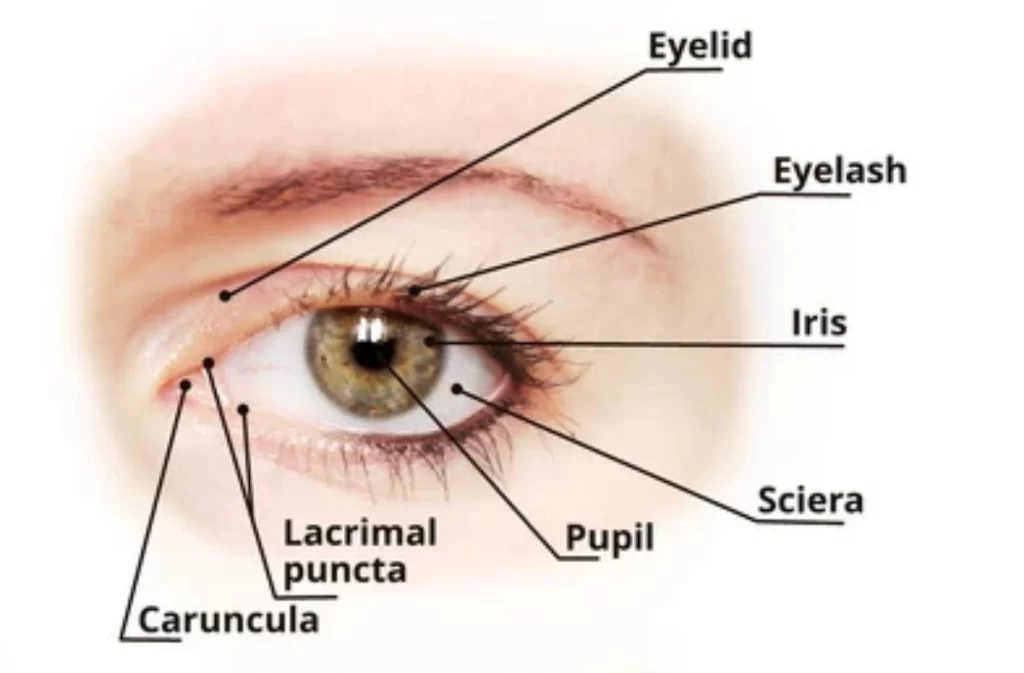
Familiarising yourself with these components helps accurately capture their form and texture when making a realistic eye drawing.
Step 2: Sketch the Basic Outline
- Begin by lightly drawing a horizontal guideline. This will help you maintain symmetry as you work on both eyes.
- Sketch the almond-shaped contour for the pencil eye. The top curve is typically more pronounced than the bottom. Ensure both eyes are proportional and aligned along the horizontal guideline.
- Inside the outline, draw a circle for the iris and a smaller circle for the pupil in its centre. The iris should be partially covered by the upper eyelid to enhance realism.
- Extend the inner corner slightly to include the tear duct. Sketch the creases above the upper eyelid and the subtle line beneath the lower lid to make your realistic eye drawing.
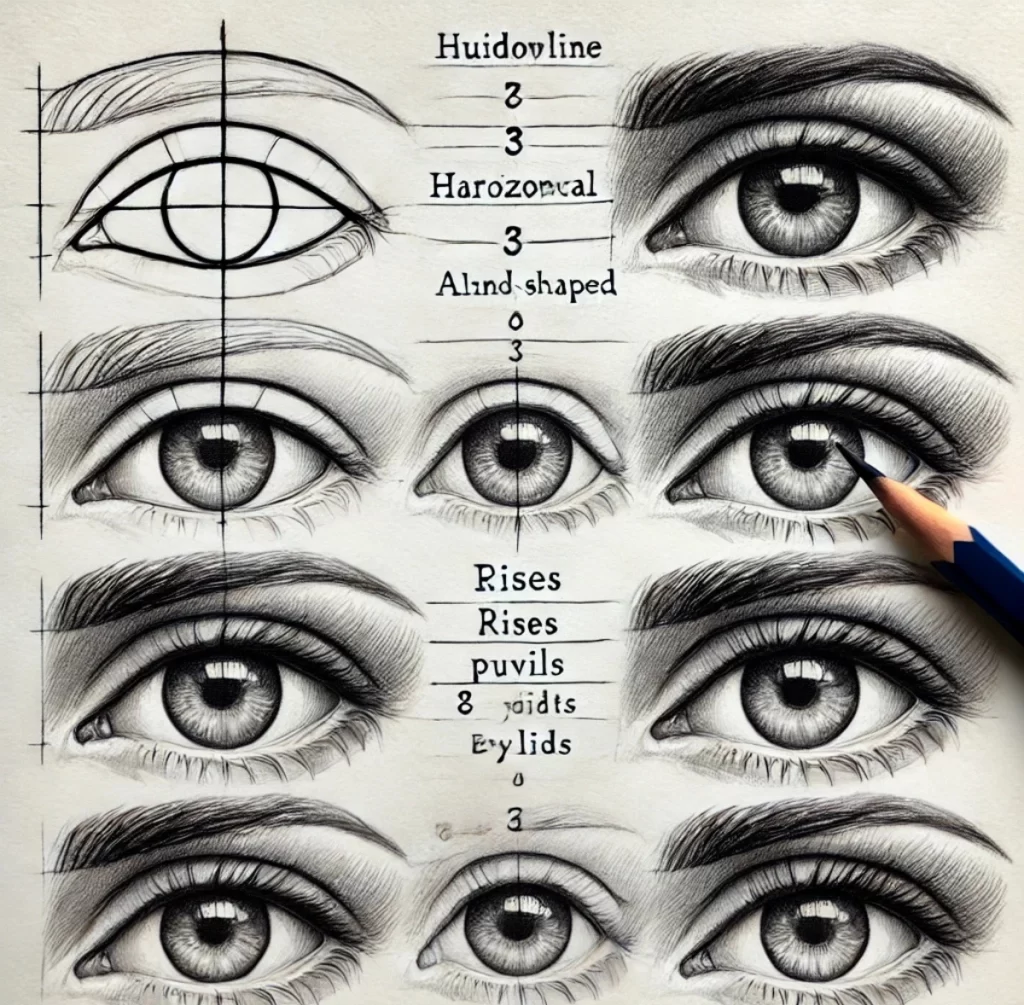
Step 3: Shade the Sclera
The sclera isn’t pure white; it has subtle shadows due to the eyelids and surrounding structures. Use an HB pencil to lightly shade the sclera, leaving the areas closest to the iris slightly darker. Blend the shading with a tissue or tortillon to create a smooth, even tone.
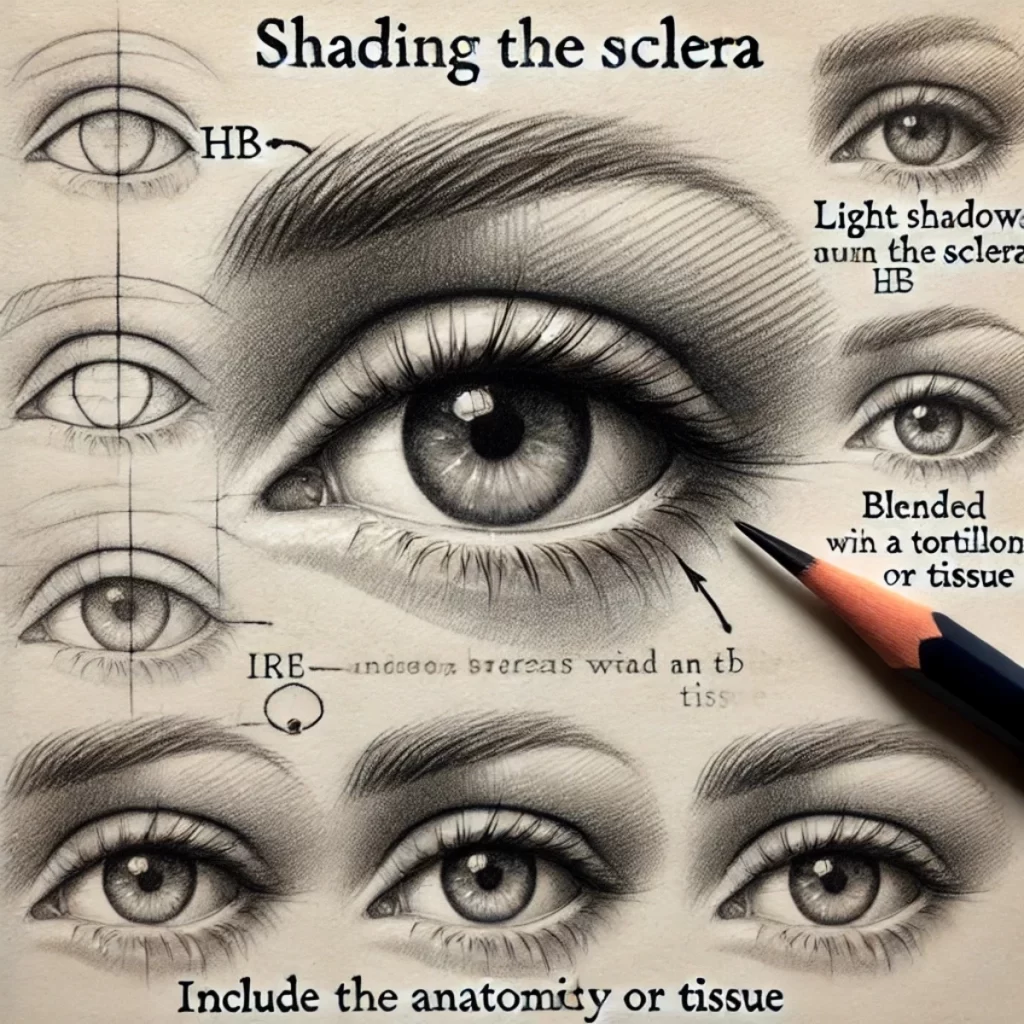
Step 4: Draw the Iris and Pupil
- Fill in the pupil with a 6B pencil to achieve a deep, rich black. This creates contrast and draws attention to the pencil eye drawing.
- Use a 2B pencil to lightly shade the iris, starting from the edges and moving toward the pupil. Then, draw radiating lines from the centre outward to mimic the natural texture of the iris. Layer with a 4B pencil to enhance depth.
- Leave a small, unshaded area on the pupil and iris to represent light reflection. This highlight brings life and realism to the eye.
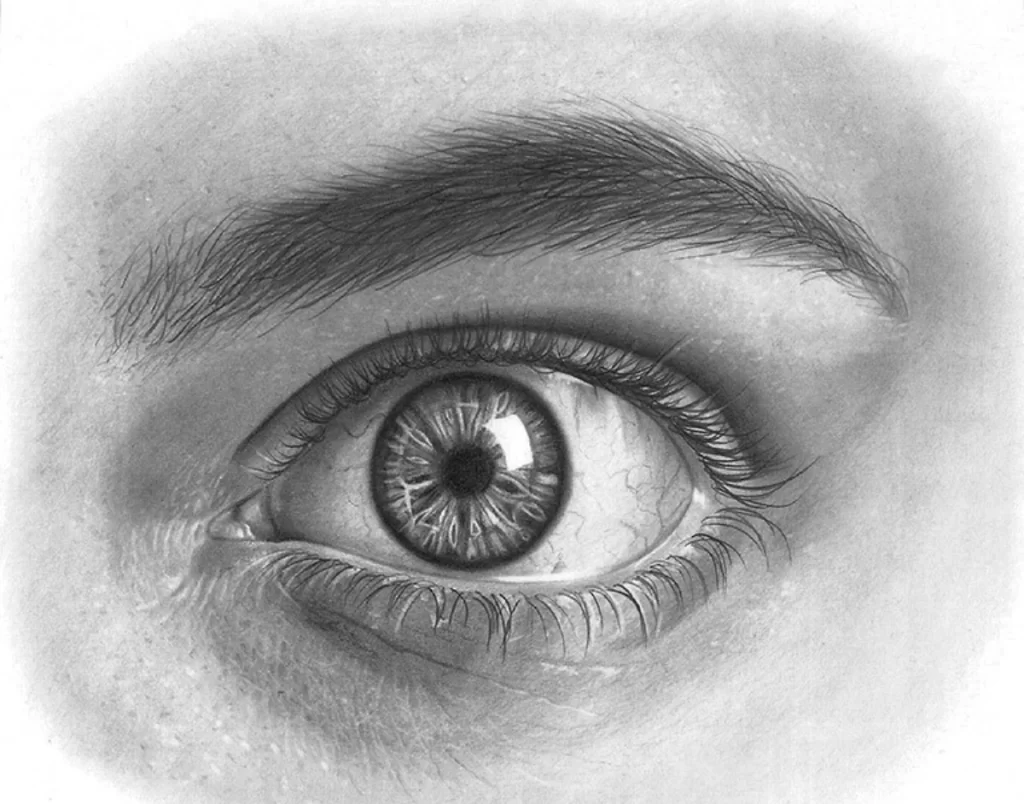
Step 5: Shade the Eyelids and Skin
The eyelids and surrounding skin play a crucial role in framing the eye. Follow these steps:
- Use a 2B pencil to shade the crease of the upper eyelid. Blend downward to create a soft transition into the sclera of your realistic eye drawing.
- Lightly shade the lower eyelid, emphasizing the slight bulge that reflects light.
- Add subtle shading around the eye socket to suggest depth and contour. Use a blending tool to soften harsh lines and ensure smooth transitions.
Step 6: Add Eyelashes
Drawing eyelashes in a realistic eye drawing requires precision and attention to direction.
- Use a sharp 4B pencil to draw individual lashes. Start from the base of the eyelid and flick upward, varying the length and curve. Keep the lashes denser toward the outer edge.
- Draw shorter and sparser lashes on the lower lid. Ensure they curve slightly downward and are spaced irregularly.
Step 7: Refine Details
At this stage, refine your pencil eye drawing by focusing on small details:
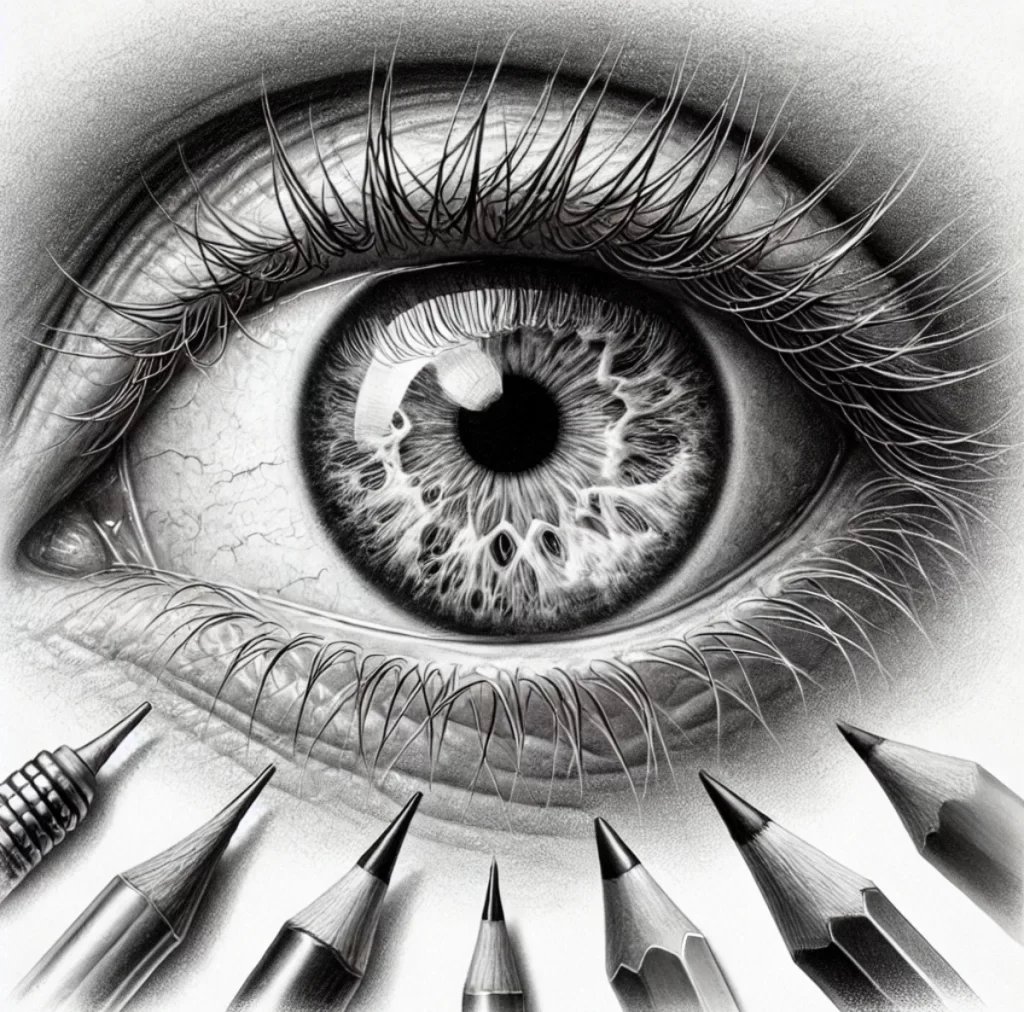
- Use a kneaded eraser to lift highlights on the iris, sclera, and tear duct.
- Add tiny veins in the sclera with an HB pencil for an extra touch of realism.
- Darken the shadows under the eyelid for added depth.
And voila! Your realistic eye drawing is now complete.
Image Courtesy – Deviant Art
Contributor





